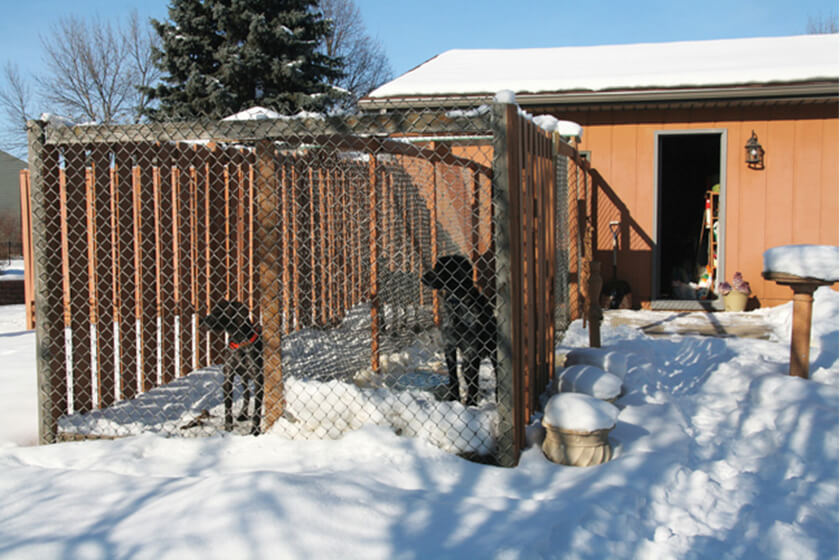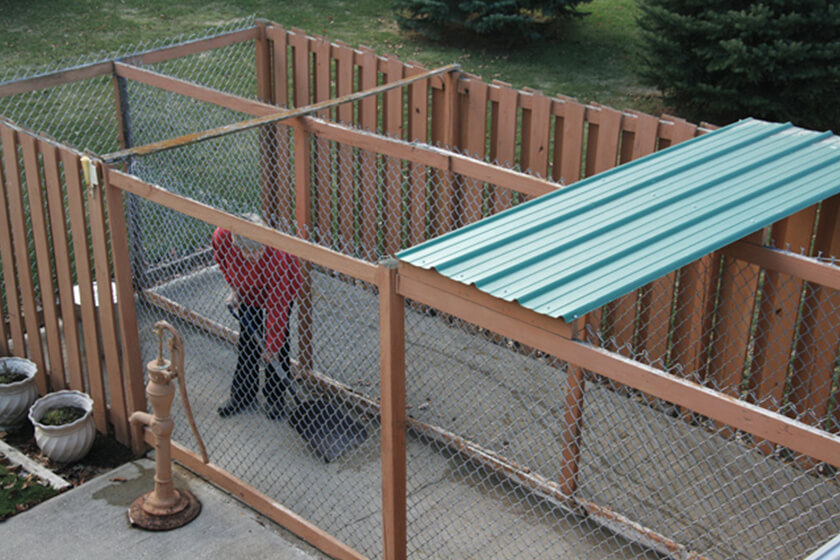How To Build the Perfect Dog Kennel – Gun Dog
By Jerry Thoms
A dog’s home is his castle, so there are some guidelines to consider when designing a dog kennel.
Advertisement
Whether building or buying a new outside kennel run or re-building an old one, a gun dog owner can create a better final product by following guidelines developed through the experiences of many other canine caretakers.
The suggestions offered here are mostly from Gun Dog readers who have spent considerable time, effort and money learning how to locate, design and construct an outdoor home for their canines. Along the way, mistakes were made, but good ideas prevailed. These are some of the best of them.
Mục Lục
Choosing the Location for Your Dog Kennel
Deciding on a location is an important first step in building a kennel run because the place chosen will contribute directly to the design of the structure and influence the choice of materials and methods of construction in producing the final product.
Advertisement
A kennel located far away from the owner’s house will have different features from the run connected directly to an attached garage. Each location has advantages and shortcomings that need attention before design and construction begin.
“A kennel located several yards from a human dwelling has the advantage of separating people from dog noise (barking), dog odor (the smell of canine urine and feces) and flies (attracted to dog urine and feces),” notes Vernon Austin, a Llewellin setter owner, breeder and bird hunter for 50-plus years. “In addition, the sight of a dog and its outdoor home can be removed from view (an aesthetic consideration for some people).”
In Austin’s opinion, the possible disadvantages of this remote location include barking control, which is more difficult because the long distance makes a trip to the kennel for a correction time-consuming and inconvenient. Keeping the kennel clean is also a greater chore, requiring more time and effort as well as making a special water source easily available.
Likewise, having lights for security or electricity for heat and/or air conditioning (yes, some dog enclosures have both) may require electrical service lines to be installed. “With a remote location, the canine caretaker has a long distance to walk outside in all kinds of inclement conditions,” Austin comments.
Locating a kennel run closer to the house has the benefits of proximity in controlling nuisance barking. Using voice commands for “quiet” usually can be given more easily and can more efficiently be enforced when the dog is within earshot, according to Dale Wright, a German wirehaired pointer owner in Minnesota.
“Kennel clean-up, likewise, is less trouble with water sources from the house and a garden hose is often in easy reach so that odor and insect issues are more quickly and effectively resolved,” Wright says.
The safety and security of a dog can be better maintained when the canine in question is in easy seeing distance as well, Wright says.
Proper Materials for Your Dog Kennel
“Any outside dog run should be narrow, 48 inches long and 12 or more feet in length, as the standard dimensions,” says Dave Schmidt, a springer spaniel owner from South Carolina. “The reason for these dimensions is to encourage dogs to naturally urinate and defecate at the far end of the run in a place farthest from the entry to the dog house or the door going into a building.
“The 48-inch width gives someone with a short-handled flat bottom shovel just enough room to scoop a load of poop and then turn around to dump the contents of the shovel into a container.
“Kennel run floors should be designed with enough slope so water will run off to avoid standing puddles. My kennel floor is also tilted toward a hand-dug ‘dry well’ 48 inches wide by 3-foot deep, positioned at the far end and filled with 3- to 4-inch diameter stone aggregate. The purpose of the dry-well is to have a place for wash water to collect and drain under the loose rocks where odor is minimal and insects cannot get at the residue of feces and urine.”
 Placing a dog kennel near a home or garage allows for easier cleaning and year-round maintenance. (Gun Dog photo)
Placing a dog kennel near a home or garage allows for easier cleaning and year-round maintenance. (Gun Dog photo)
In Schmidt’s design, entry doors are located on the side of the kennel run closest to the opening of the doghouse and furthest from the end of the run.
“With doors at the far end of the kennel run, dogs have to stand in and walk through pee and poop when exiting and entering the run, scattering feces all over,” Schmidt explains as his reason for positioning his entry doors on the side instead at the end of the kennel run.
“My outside kennels all have some kind of covers so my dogs can get some shade in hot weather and have a dry place to be out of the rain or snow,” says Jim Nevers, a vizsla owner from Pennsylvania. “Some kennels are covered with a stiff wire mesh to keep rambunctious dogs from climbing out and hot-to-trot males from climbing in when there are females in heat.”
Dog Kennel Floors and Walls
Concrete is the most common material for the floor on dog kennels. “I’ve seen alternatives to concrete such as gravel, which, though less expensive, makes picking up feces difficult and sometimes impossible,” says Elizabeth Conrady, a German shorthaired pointer owner.
There are more options like steel and wood, but concrete, though more costly and difficult to install, is tougher and more long lasting, according to Conrady.
“Yes, most concrete will crack, so expect that,” she admits. “With time and extremes in temperatures, the ground will shift and concrete may buckle, split, and separate. Much of this can be controlled to some degree if high quality cement is used and reinforced with rebar and wire. Having a well compacted dirt surface with a gravel under-layer will also help to keep concrete from cracking.”
Dog Kennel Fencing Options
Chain-link fencing for outside and inside kennel runs has always been popular because of its simple installation, efficiency of use, long-term durability and relatively low cost. “Chain-link, for us, is the most popular fencing product because it is easy to find, easy to install and easy to maintain,” says Hank Shaw, who has raised American Brittanys for 15 years.
“We built our three-stall run 20 some years ago, and though our chain-link doesn’t look as good as new, it is certainly working as well as the day we put it in to use.”
Larry Devries, who raises and hunts Chesapeake Bay retrievers in eastern Maine, prefers welded wire.
 Popular outdoor dog runs often include concrete floors and chain-link walls. (Gun Dog photo)
Popular outdoor dog runs often include concrete floors and chain-link walls. (Gun Dog photo)
“Welded wire with a powdered coating is our choice for fencing because this material is so resistant to dog urine and dog teeth,” he says. “Though initially more expensive compared to other fencing, its over-all resistance to wear makes this product cost effective. I’ve had a couple of strong and persistent Chessies that would try to chew on the welded wire but gave up because of a lack of headway.”
Jeff Berg, a pointing Labrador breeder, offers another opinion.
“For a windbreak and for privacy purposes, I have used inch-thick treated lumber, metal siding and fiberboard,” he says. “Each material has advantages and some shortcomings. Treated pine, 1-inch thick, 6 inches wide and 4 feet long, when spaced an inch apart will break the wind and still let some air come through and also provide some privacy.
“This material, however, won’t stand up well to dog teeth. For more protection from wind, more resistance to chewing and for greater privacy, sheets of metal or fiberboard siding probably are better,” Berg concludes.
Advertisement
Many gun dogs probably spend 95 percent of their lives in an outside kennel run, waiting for daily exercise, training and days in the field and on the water during hunting season.
As such, we owe it to them to make their living quarters as comfortable and clean as possible. By implementing these suggestions, you should be able to provide your gun dog with a dog kennel he’ll be happy to call “home.”















![Toni Kroos là ai? [ sự thật về tiểu sử đầy đủ Toni Kroos ]](https://evbn.org/wp-content/uploads/New-Project-6635-1671934592.jpg)


